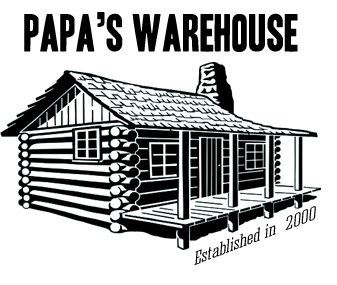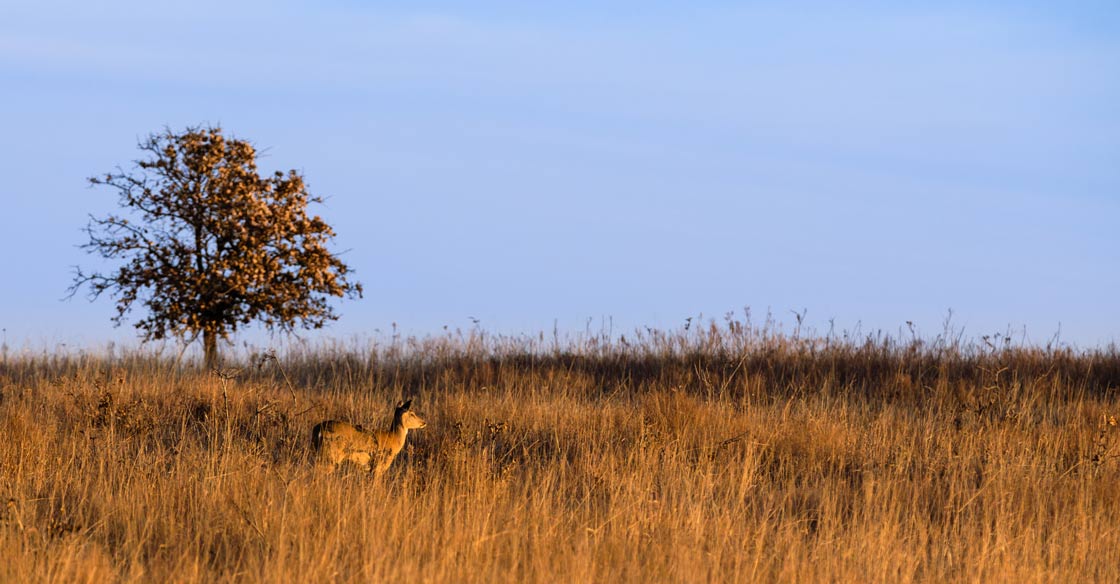
Oklahoma Hunting Seasons - Limits and Regulations 0
About the Oklahoma Hunting Seasons
There’s no better time of year than hunting season in Oklahoma. But before you grab your gear and head out into the wilderness, you better check your dates first. The game you are interested in and the time of year will determine whether it’s legal or not for you to go after it. So read our short guide to the proper information about the different Oklahoma hunting seasons. This way you never have to worry about getting into trouble and can always be proud to show off your trophy catch.
Permits
You will need some of them, especially in certain areas. It really depends on the type of hunting you plan on doing. Before you do anything, head to your local Fish and Wildlife Office and apply online for your permit. There’s a wide range of permits available for whatever kind of game you're trying to catch and all kinds of discounts for students, seniors, veterans and so on.
There is also a combined a hunting and fishing license which is more than worth it so you only have to do your paperwork once a year and assuring you are covered! Not only that, it is cheaper than the individual licenses so you get a discount on both!
Deer and Big Game
If you looking into a bigger catch then you have a pretty narrow window. Essentially for any larger animals that range from deer to bears and even elk, late November is a general time. You can go after antelope in October, but be sure to check explicitly for mountain lions. Both of these months are short months that go by quickly. Remember to learn some tactics so you can succeed in hunting winter buck. In addition, year to year the regulations change so it’s worth calling the local office before you try to tangle with one of them.
The Right Equipment
When you are filing for your permit make sure you check to be sure your gun is licensed. Most rifles purchased within the state should be fine, but be sure to double check. You definitely don’t want to be slapped with a random fine just because you didn't have a muzzleloader or used incorrect ammunition.
Most of the hunting seasons are also during chillier times of the year. Make sure you have the right items to keep you warm. If you want to be able to sit out there and stalk your prey then throw some hand warmers and boot warmers in your bag so you can be prepared for whatever mother nature throws your way!
Getting the Most of Hunting Season
Hunting season is the best time of year. Just remember there isn’t one but many Oklahoma hunting seasons. So check out the Oklahoma hunting regulations, apply for the right permits and get yourself ready for some incredible fun!
- Caroline Mayou
- Tags: Hunter's Corner
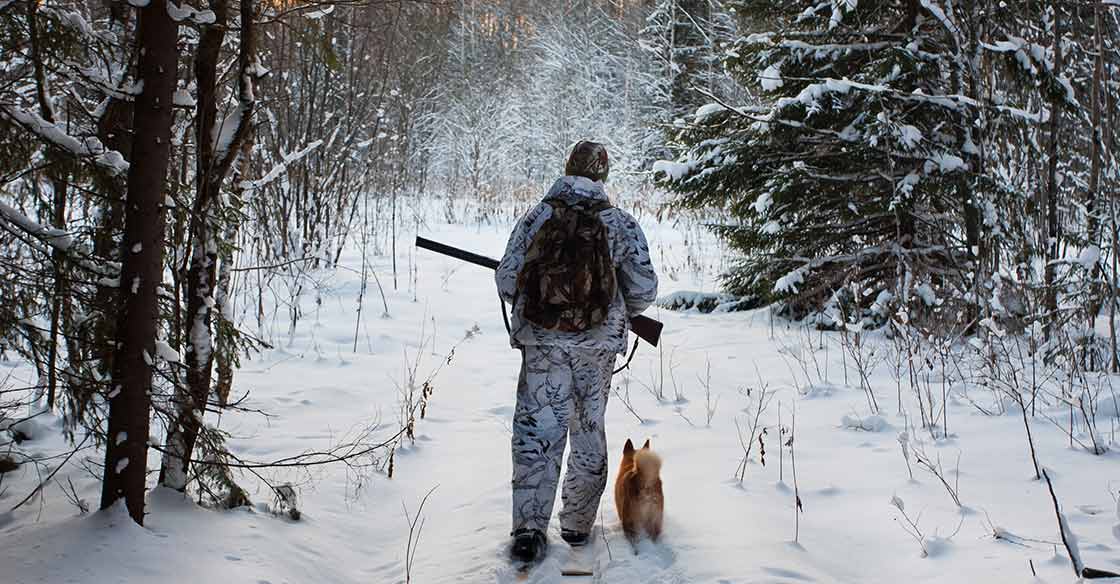
The 3 Best Hunting Gear for the Winter Season 0
We are experiencing some weather issues this late summer, and indications are we might be in for a tough winter too. Autumn hunting season 2017 calls for taking extra precautions and selecting the best Heat Hactory clothing that keeps the body warm. Your search for the best hunting gear and protective clothing starts right here on this page. These tips are courtesy of Papa’s Warehouse, proud suppliers of proven warming products for when out hunting, skiing, or camping.
1. Use the Best Hunting Gear to Protect Your ExtremitiesWarmth escapes a hiking tent each night when we leave the flap open while we step outside. With our bodies, heat goes walkabout through any part exposed directly to the air. Our feet, and hands especially are vulnerable, as they do not have much natural insulation over them. Our FIRST TIP is to stock up on disposable foot and hand warmers, so you never run short of the best hunting gear for the winter season.
2. Protect Your Sensitive Head and Neck from the Chilly ColdOur heads and necks are great energy conductors too. In summer, we enjoy the sun beaming down on them preparatory to warming our bodies. Heat escapes from our necks and heads just as fast. So our SECOND TIP for the best hunting gear for the winter season is wearing a turtleneck or scarf, and keep your collar tightly buttoned up!
3. Sleep Comfortably at Night with a Large Body WarmerThings can get out of hand at night when we start shaking from the cold. This is nature’s warning alarm that our body temperature is becoming subnormal. Worse still, this drains our precious bodily energy so we get cooler still. If this were to happen, it’s essential not to fall asleep. We have to stand up and exercise until the moment passes.
Alternatively, we can tuck into our sleeping bags with as much clothing on as possible, provided it is dry that is. This seldom happens when hiking through the snow in winter. The workaround is having a supply of adhesive body warmers in our backpack. Our THIRD TIP for selecting the best hunting gear should keep you nice and warm at night. But there are other precautions you need to take.
Have a Plan Where You Are Going and Tell Someone
Nature can spring surprises on us when we are out in it. An avalanche could block our path. A rock could snag a rope when abseiling. It is always best to hunt in the company of two others. Then there is one person to go for help if necessary, while the other stays behind as the company.
The best hunting gear of all includes a fully charged phone in your backpack, at least one working flashlight, and a compass or GPS. If you are unable to walk out and someone knows the trail you likely followed, these will help you geolocate your position, and beam your rescuers in. Taking these precautions does not mean you are a softy. It means you remain in charge.
- Caroline Mayou
- Tags: Hunter's Corner
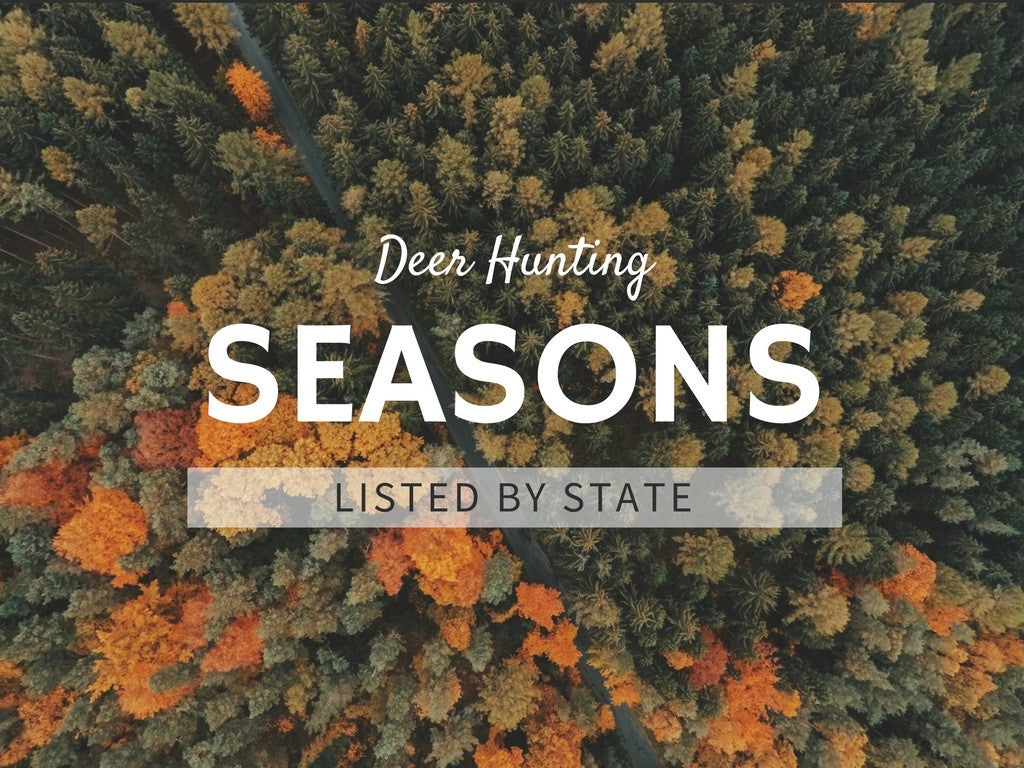
Deer Hunting Seasons By State 0
Alabama
Stalk Or Dog Hunting
Antlered Bucks
Zones A, B, and C: November 19 - January 15
Unantlered Deer (Privately Owned or Leased Land Only)
Zones A & B: November 19 - January 15
Zone C: November 19 - November 27 & December 23 - January 2
Unantlered Deer (Open Permit- Public Land)
Stalk Hunting (No Dogs)
Antlered Bucks
Zone A, B & C: January 16 - February 10
Unantlered Deer (Privately Owned or Leased Land Only)
Zones A & B: January 16 - February 10
Special Muzzeloader & Air Rifle
Privately Owned or Leased Land and National Forest Service Land - Stalk Hunting Only, No Dogs
Zones A, B & C: November 14 - November 18
Bow & Arrow & Spear
Stalk Hunting Only, No Dogs
Zones A & C, Either Sex: October 15 - February 10
Zone B, Antlered Buck Only: October 15 - October 24
Zone B, Either Sex: October 25 - February 10
Alaska
Deer Seasons
General Season
August through December, dates vary greatly by area
Arizona
The OTC Hunt Season Dates
Summer Velvet Bucks
August 21 - September 10
Pre-rut (Mule Deer)
December 11 - December 31
Rut (Mule Deer & Coues Deer)
January 1 - January 31
Arkansas
Archery
Spetember 24 - February 28
Firearms
November 12 - December 25
Muzzleloader
October 15 - 23
December 10 - 19
Firearms, Private Land, Antlerless
October 29 - November 2
Youth Firearms Hunt
November 5 - 6
January 7 - 8
California
Archery
Zone A: July 9 - 31
Zone B: July 23 - September 11
Zone D: August 20 - September 25
General Season
Zone A: August 13 - September 25
Zone B: August 27 - October 23
Zone C: September 17 - October 23
Zone C: September 17 - October 23
Zone D: September 17 - November 6
Colorado
Archery
August 27 - September 25
Muzzleloaders
September 10 - September 18
Plains Muzzleloader
September 10 - 18
Plains Rifle
October 29 - November 8
Connecticut
Deer Seasons- Bowhunting
Private Land (Zones 11-12): January 1 - 31
Private Land (All Zones): September 15 - December 31
State Land Bowhunting Only Areas: September 15 - December 31
State Land: September 15 - November 15, December 21 - 31
Archery- Only Controlled Hunt Lottery: September 15 - November 15
Deer Seasons- Rifle/Shotgun
Shotgun-No Lottery "A" Season: State Control Areas: November 16 - 25
Shotgun- No Lottery "B" Season": State Controlled Areas: November 26 - December 6
Shotgun/Rifle- Lottery "A" Season: State Land and Controlled Hunt: November 16 - 25
Shotgun/Rifle- Lottery "B" Season: State Land and Controlled Hunt: November 26 - December 6
Shotgun/Rifle: Private Lands: November 16 - December 6
Shotgun/Rifle: Landowner: November 1 - December 31
Deer Seasons- Muzzleloader
Private Land: December 7 - 31
State Land: December 7 - 20
Delaware
Archery & Crossbow
September 1 - January 31
Muzzleloader
October 7- 15
January 23 - 28
Shotgun
November 11- 10
January 14 -21
Handgun
January 7 - 14
Special Antlerless
October. 1, 17, 21, 22, 24, 28, 29, 31. December 10 - 17
Youth and Disability Hunt
November 5
Florida
Archery
Zone A: July 30 - August 28
Zone B: October 15 - November 13
Zone C: September 17 - October 16
Zone D: October 22 - November 23
Crossbow
Zone A: July 30 - September 2
Zone B: October 15 - November 14
Zone C: September 17 - October 16
Zone D: October 22 - November 23
Firearms
Zone A: September 3 - 16
Zone B: November 19 - December 2
Zone C: October 22 - November 4
Zone D: December 3 - 9; February 20 - 26
Muzzleloader
Zone A: September 17 - October 16; November 19 - January 1
Zone B: December 3 - February 19
Zone C: November 5 - January 22
Zone D: November 24 - 27; December 10 - February 19
Georgia
Archery- Bucks & Does Statewide
September 10 - January 8
Extended Archery- Bucks & Does Clayton, Cobb, Dekalb, Forsyth, Fulton, Gwinnett & Rockdale Counties
September 10 - January 31
Primitive Weapons
October 15 - January 8
Firearms
October 22 - January 8* Permits are required for deer hunting. Only 7,500 permits are issued. Specialty hunts, such as the disability hunting season, require permits. Nonresident junior hunters are not allowed to hunt during the youth hunting season.
** Some counties have special regulations regarding the use of firearms and what is considered a legal deer.
Hawaii
Island of Kauai
Black-tailed Deer: Year Round
Island of Lanai
Axis Deer: Mid- February through Mid- May
First weekend in March (Youth Hunt)
* Some units or regions on the island limit hunting to particular dates and hunting methods. To ensure you hunt legally, visit the Hawaii Division of Forestry and Wildlife website.
Idaho
General Deer Season
October 10 - December 1
* Dates vary greatly by region and type of animal since Idaho relies on wildlife management units to control hunting and populations.
Illinois
Illinois offers online hunting permit registration and purchase, and permits are available for state residents and nonresidents.Archery
October 1 - January 15
Muzzleloader
December 1 - 4
December 9 - 11
Firearms
November 18 - 20
December 1 - 4
Antlerless Deer/Special CWD Season
December 29 - January 1
January 13 - 15
Youth Hunt, Firearms
October 10 - 12
November 20 - 22
* Season may vary by county. For more on hunting in a specific region, visit the Illinois Department of Natural Resources Website.
Indiana
Reduction Hunt (Formerly Called Urban Hunt)
September 15 - January 31
Youth Hunt
September 24 - 25
Archery
October 1 - January 1
Firearms
November 12 - 27
Muzzleloader
December 3 - 19
Antlerless Special Season
December 26 - January 1
* Deer bag limits vary by region, season and license. Licenses for deer harvest are required. Be sure to visit the Indiana Department of Natural Resources to obtain a license and additional information before heading into the woods.
Iowa
Youth Season: September 17 - October 2
Disabled Hunter Season: September 17 - October 2
Early Muzzleloader: October 15 - 23
Muzzleloader: December 19 - January 10
Regular Gun Season 1: December 3 - 7
Regular Gun Season 2: December 10 - 18
Non-Resident Holiday Season: December 24 - January 2
* Deer hunters are required to purchase permits for each deer collected.
Kansas
Archery: September 12- December 31
General Youth & Disabled Hunt: September 3 - 11
Muzzleloader: September 12 -25
Pre-Rut Antlerless Deer: October 8 - 9
General Firearms: November 30 - December 11
Whitetail Antlerless Only- Firearms: January 1 - 15
Whitetail Antlerless Only- Archery: January 16 - 31
* Whitetail only seasons can vary in length by unit
Kentucky
Archery: September 3 - January 16
Crossbow: October 1 - 16, November 12 - December 31
Early Muzzleloader: October 15 - 16, December 10 - 18*
Firearms: November 12- 27
Youth Only Firearms: October 8 - 9
Free Youth Weekend: December 31 - January 1
* Some season dates and regulations may vary by zone. Be sure to visit the Kentucky Department of Fish and Wildlife Resources website for more information.
Louisiana
Area 1
Archery: October 1 - January 31
Muzzleloader: November 12 - 18, January 23 - 31
Firearms (No Dogs): November 10 - December 9, January 9 - 22
Firearms (Dogs): December 10 - January 8
Area 2
Archery: October 1 - January 31
Muzzleloader: October 22 - 28, January 16 -22
Firearms (No Dogs): October 29 - December 7
Firearms (Dogs): December 8 - January 15
Area 3
Archery: September 19 - January 15
Muzzleloader: October 8 - 14, November 28 - December 2
Firearms (No Dogs): October 15 - November 27, December 4 - January 8
Firearms (Dogs): N/A
Area 4
Archery: October 1 - January 31
Muzzleloader: (Bucks Only) January 30 - 31 (All Deer) November 12 - 18, January 23- 29
Firearms (No Dogs): (Bucks Only) November 21 - 24 November 28 - December 2, December 5 - 9, January 9 -13, January 16 - 20 (All Deer) November 19 - 20, November 25 -27, December 3 - 4, January 14- 15, January 21 - 22
Area 5
* Archery: (Bucks Only) October 1 - 15 (All Deer) October 16 - February 15
Muzzleloader: (Bucks Only) November 12 - 18, January 30 -31 (All Deer) January 23 - 29
Firearms (No Dogs): (Bucks Only) November 19 - 24, November 28 - December 9 (All Deer) November 25 -27
Firearms (Dogs): (Bucks Only) December 12 - 30, January 2 - 13, January 16 -22 (All Deer), December 10 - 11, December 31 - January 1, January 14 -15
Area 6
Archery: (Bucks Only) October 1 - 15 (All Deer): October 16 - February 15
Muzzleloader: November 12- 18, January 23 - 31
Firearms (No Dogs): November 19 - December 9
Firearms (Dogs): December 10 - January 22
Maine
Resident Only Day: October 29
Youth Deer Day: October 22
Firearms: October 31 - November 26
Archery: September 29 - October 28
Muzzleloader: November 28 - December 3* December 5 - 10
Expanded Archery: September 10 - December 10*
* Deer season hunting requires deer permits. This is only for designated areas. For more information about legal hunting in specific areas of Maine, visit the Maine Department of Inland Fisheries and Wildlife website.
Maryland
Antlered Deer- Whitetail
Archery: September 9 - October 19, October 23 - November 25, December 12 - 16, January 2 - 5, January 9 - 31 (Region A Only) January 6 - 7
Muzzleloader: October 20 - 22, December 17 - 31
Firearms: November 25 - December 10 (Region B Only) January 6 -8
Antlerless Deer-Whitetail
Archery: (Region A) September 9 - October 19, October 20 -22, December 29 - 31 (Region A- Public Land) December 31 (Region B) October 20 - 29 December 17 -31
Muzzleloader: (Region- Private Land) October 20 - 22, December 29 - 31 (Region A - Public Land) December 31 (Region B) October 20 -29, December 17 - 31
Firearms: (Region A- Private Land) December 9 - 10 (Region A- DNR Public Land) December 10 (Region B) November 26 - December 10, January 6 -9
Massachusetts
Archery: October 17 - November 26
Shotgun: November 28 - December 10
Primitive Firearms: December 12 - 31
Youth Hunt: October 1
Paraplegic Hunt: November 3 - 5
Michigan
Early Antlerless, Firearms: September 17 - 18
Liberty Hunt: September 17 - 18
Independence Hunt: October 13- 16
Archery: October 1 - November 14, December 1 - January 1
Regular Firearm: November 15 -30
Muzzleloader: December 2 - 18*
Late Antlerless, Firearms: December 19 - January 1
* Dates vary by zone.
Minnesota
Archery: September 17 - December 31
Firearms 1A: November 5 - 20
Firearms 2A, 3A: November 5 - 13
Firearms 3B: November 19 - 27
Muzzleloader: November 26 - December 11
Youth Hunt: October 20 - 21
Licenses can be purchased from a Department of Natural Resources agent, the department's office in St. Paul, over the phone or online.
Mississippi
Mississippi is divided into three regions, especially for deer seasons: Delta (western Mississippi) Hill (middle Mississippi) and Southeast.
Archery
(Hill) October 1 - November 18
(Southeast) October 15 - November 18
(Delta) October 1 - November 18
Youth Gun
November 5 - January 31
Firearms
(Hill-Dogs) November 19 - December, December 24 - January 18
(Southeast-Dogs) November 19 - December 1, December 24 - January 18
(Delta- Dogs) November 19 - December 1, December 24 - January 18
(All Zones- Dogs) December 16 - 23
Primitive Weapon
(Hill) November 7 - 18, December 2 - 15
(Southeast) December 2 - 15
(Delta) December 2 - 15, January 19 - 31
Primitive Weapon/ Archery
(Hill) January 19 - 31
(Southeast) January 19 -31, February 1 - 15
Missouri
Archery: September 15 - November 11 / November 23 - January 15
Firearms- Antlerless: December 2 - 4
Firearms- Main Season: November 12 - 22
Firearms- Alternative Methods: December 24 - January 3
Youth Firearms Hunt: October 29 - 30, November 25 - 27
Montana
Archery: September 3 - Otober 16
Youth Hunt: October 20 - 21
Firearms: October 22 - November 27
Backcountry, Archery: September 3 - 14
Backcountry, Firearms: September 15 - November 27
Nebraska
Archery: September 1 - December 31
Muzzleloader: December 1 - 31
Firearms: November 12 - 20, January 1 - 15 (Antlerless Only)
Nevada
Mule Deer Seasons
General Season: Aug. 10 - September 9*
September 10 - September 30*
October 5 - November 2*
Antlerless Season: September 17 - November 20 *
Antlered Season: October 5 - November 30*
* Opening and closing season dates vary in some regions.
New Hampshire
Archery
September 15 - December 15
Muzzleloader
October 29 - November 8
Firearms
November 8 - December 4
Youth Hunt
October 25 - 26
* Firearms season closes early in some areas. For more information about hunting in New Hampshire's wildlife management units, visit the New Hampshire Fish and Game website. Source: huntingseasonhq.com
New Jersey
Archery
(Early Zones Only) September 10
(Statewide) October 1
(Permit Only) October 29
(Winter Hunt) January 1
Youth Archery
September 24
Youth Firearm
November 19
Firearm
December 5 - 10
New Jersey regulates deer hunting by zone. For more information on relevant regulations in your zone, visit the New Jersey Division of Fish and Wildlife website.
New Mexico
General Season
October 15 - November 27*
Archery Only
September 1 - 24
Muzzleloader or Archery
September 27 - October 3
New York
Archery & Crossbow
September 27 - December 20*
Regular Firearms
October 1 - January 31*
Muzzleloading
October 15 - December 20*
Special Firearms
For Suffolk County only, January 1 - 31; special permit required.
North Carolina
Youth Deer Hunting Day
September 24
Eastern Deer Season
Archery: Septermber 10 - 30
Blackpowder: October 1 - 14
Gun: November 12 - January 2
Central Deer Season
Archery: September 10 - October 28
Blackpowder: October 29 - November 11
Gun: November 12 - January 2
Northwestern Deer Season
Archery: September 10 - November 4
Blackpowder: November 5 - 18
Gun: November 19 - January 2
Western Deer Season
Gun: November 21 - December 10
North Dakota
White-tailed & Mule Deer Seasons
Bow Season: September 2 - January 8
Gun Season: November 4 - 20
Muzzleloader Season: November 25 - December 11
Youth Season: September 16 - 25
before heading out on your North Dakota hunt, be sure to visit the Game and Fish Department website for more details regarding licenses, regulations and permits.
Ohio
Archery
September 24 - February 5
Youth Firearms
November 19 - 20
Firearms
November 28 - December 4
December 17 - 18
Muzzleloader
January 7 - 10
Individual Ohio counties have bag limits; counties may have two, three or four deer limits. Be sure to visit the Ohio Department of Natural Resources for additional bagging information
Oklahoma
Archery
October 1 - January 15
Youth Hunt Firearm
October 14 - 16
Muzzleloader
October 22 - 30
Firearm
November 19 - December 4
Holiday Antlerless Firearm
December 16 - 25
Oregon
Archery Season
August 27 - September 25
Novemebr 12 - December 11
General Muzzleloader Season
August 27 - September 25*
General Firearms Season
October 1 - October 30*
Youth Controlled Hunt Seasons
August 27 - 30*
Buck Deer Seasons
October 1 - November 4
* Seasons dates vary greatly in some regions of the state based on specific hunting units. Many of Oregon's deer seasons are controlled hunt seasons, which require specialty permits.
Pennsylvania
Archery & Crossbow
(Statewide) October 1 - November 12, December 26 - January 14
(Specific Areas): November 28 - December 3* Muzzleloading
October 15 - December 20*
Flintlock
(Statewide) December 26 - January 14
(Specific Areas) December 26 - January 28*
Extended Regular Firearms, Antlerless
December 26 - January 28
Military Bases, Antlerless
As determined by U.S. Army
* Additional hunting dates separate from the statewide hunting season are available in countless areas across the state. For more information on hunting within your region or in another area, visit the Pennsylvania Game Commission website. Source: huntingseasonhq.com
Rhode Island
Archery
September 10 - 11
September 15 - January 31
Muzzleloader
October 1 - October 4
October 29 - 30
November 5 - November 27
December 26 - January 2
Shotgun
December 3 - December 18
December 26 - January 2
South Carolina
Zone 1
Primitive Weapons: October 1 - 10
Archery: October 17 - 29
p Gun Hunts: October 11 - 15, October 31 - December 31
Zone 2
Primitve Weapons: October 1 - 10
Archery: September 15 - 30
Gun Hunts: October 11 - December 31
Zone 3
Archery: September 15 - 30
Gun Hunts: October 1 - December 31
Zone 4
Archery: September 15 - October 10
Gun Hunts: October 11 - December 31
South Dakota
Archery
September 24 - December 31
Muzzleloader
December 1 - 31 any deer
December 1 - January 15 antlerless
Youth Hunt
September 10 - January 15
Firearms
November 1 - January 8
* Deer firearms season dates vary greatly throughout South Dakota depending on region. Find specific hunting dates and regional requirements at the South Dakota Game, Fish and Parks website.
Tennessee
Archery (Includes Crossbow)
September 24 - October 28
October 31 - November 4
Muzzleloader & Archery
November 5 - 18
Gun, Muzzleloader & Archery
November 19 - January 8
Young Sportsman
October 29 - 30
January 14 - 15
Tennessee deer seasons are managed by hunting units. Specific season dates may vary per each region. For more info, visit the Tennessee Wildlife Resources Agency website.
Texas
Archery
October 1 - November 4
Firearms
November 5 - January 15
Muzzleloader
January 5 - 18
Special late Season
January 2 - 29
Youth Hunt
October 29 - 30
January 2 - 15
Utah
Archery
August 20 - September 16
Muzzleloader
September 28 - October 6
Firearms
October 22 - 30
Special Late Season
January 2 - 29
Vermont
Archery
October 1 - 28
December 3 - 11
Youth Weekend
November 5 - 6
Rifle
November 12 - 27
Muzzleloader
December 3 -11
Antlerless
December 3 - 11
Virginia
Youth & Apprentice
September 24 - 25
Early Archery
October 1 - November 18
Archery
December 1 - January 7
Urban Archery
September 3 - 30
January 8 - March 26
Early Muzzleloader
November 5 - 18
Late Muzzleloader
December 17 - January 7
Firearms
November 19 - January 7
Season dates vary by region. For more information on hunting dates in your region, visit the Virginia Department of Game & Inland Fisheries website.
- Caroline Mayou
- Tags: Hunter's Corner
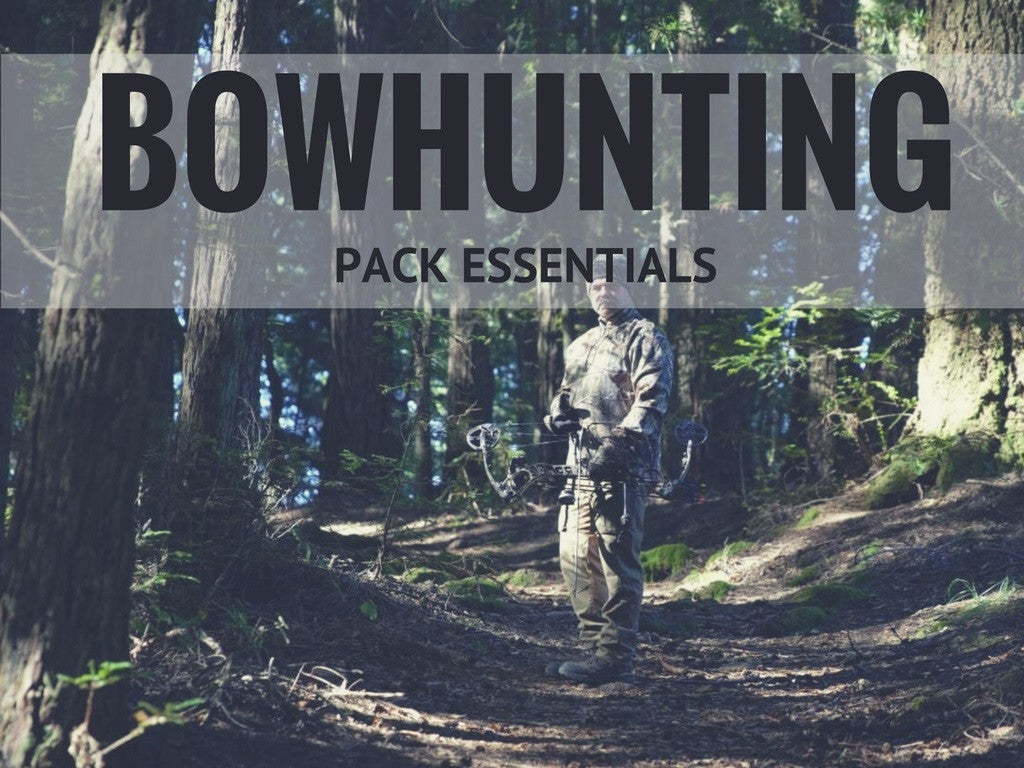
Bowhunting Pack Essentials 0
Have you ever seen a buddy bring out a tool from their bag that you had never thought to bring with you on a hunting trip? We've all had it happen. So we've decided to create a list of the bare essentials that you cannot do without on your hunting escapades.
1. Spare fuel, petrol or diesel in your vehicle in case you ever run out of gas while on a trip. For those of you camping out for long periods of time and carrying electrical appliances, it's smart to keep a back up generator.
2. A torch light- If a wild animal confronts you and your firearm is not loaded or you do not have time to load, the high beam of a torch light is your next best tool. Simply flash the light into the eyes of the animal and it will freeze for a short while, earning you at least a minute to load/reload/ or pull out your rifle.
3. First Aid Kit: Always carry a first aid kit in case of emergency. I like to carry Quick Clot or CHITO-Sam with me at all times in case of a gun shot wound.
4. Bow Maintenance- Maintenance is key to having a successful hunt. Wrapping your bow twice and carrying extra cotton, sponge, cushion or even socks to fill the free space inside your bow case can stop it from moving around and getting damaged during transit.
5. Head Lamps- A head lamp can be very handy when hunting from a treestand or even on foot. Trees can create shade and a head lamp can help you find things faster.
15. Wool Socks- Any heat you can get is great. While we're on the subject, hand warmers should be carried at all times too.
16. Range Finder (with GPS & compass)- You do not want to get lost.
Of course this is our own personal list; many have created more thorough lists with their own favorite products, tools and other gear to carry.
- Caroline Mayou
- Tags: Hunter's Corner
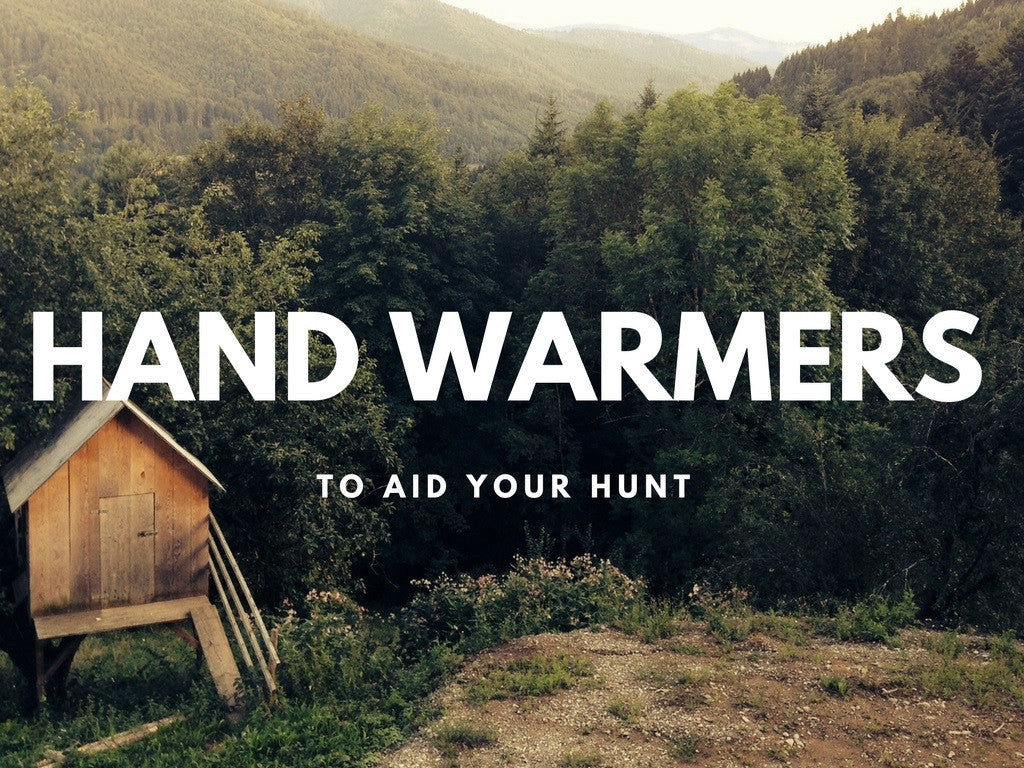
Hand Warmers For Hunting 0
The use of your hands is absolutely necessary when it comes to holding weapons and tools such as hunting rifles, laying down your traps, etc. If you want to be a successful hunter, you'll need all of the agility you can get. Being a hunter is a dedicated job and you have to be on your toes every moment. Your hands really are your best friends.
The most common hunting region is Africa, where the climate is hot and incredibly dry. However, some of the other best regions are in the North where the climate is very cold. It is therefore necessary to be equipped with all of the needed equipment and supplies if you plan on having a successful hunt.
One of important things that people forget to pack along with them is essential to keeping your hands warm- they're called hand warmers. Hunting is a risky sport; you can be vulnerable to unexpected attacks (Todd Orr demonstrated this perfectly last week) and you therefore need to stay ready at all times. You can also miss your opportunity if you are not paying attention or your hands are compromised by the cold and unable to do their job.
Suppose, you encounter a wild deer running full speed; you take out your rifle and start aiming. Unfortunately, your fingers are shaking and your reaction time has now increased. You've just missed your shot. The above example show how easily you can lose your day's prize just because of a small mistake- or simple ignorance.
One more example can be that you are having your day's rest and therefore have temporarily lowered your guard. However, a bear takes this as an opportunity and advances on you without you getting to know about it until his near vicinity. If your hands are cold, you'll be slower to reach out your weapon and defend yourself compared to a situation in which you have maintained yourself. The former situation will increase the risk of losing your life while the latter will ensure that there is minimum risk involved.
The colder regions can also pose a threat to you getting exposed to hypothermia- this is a phenomena where you can lose your hand because of weather. If you get exposed to water, you need an effective and fast remedy to make yourself warm again or you pose yourself a threat to fall victim to the cold.
There is a lot of gear available on the market to effectively keep you warm. But Hand Warmers are worth the small investment you are going to make on yourself when you embark on a hunting journey. This journey can be one of a lifetime, a memorable experience for you and your loved ones, and a comfortable one if you choose this path.
- Caroline Mayou
- Tags: Hunter's Corner
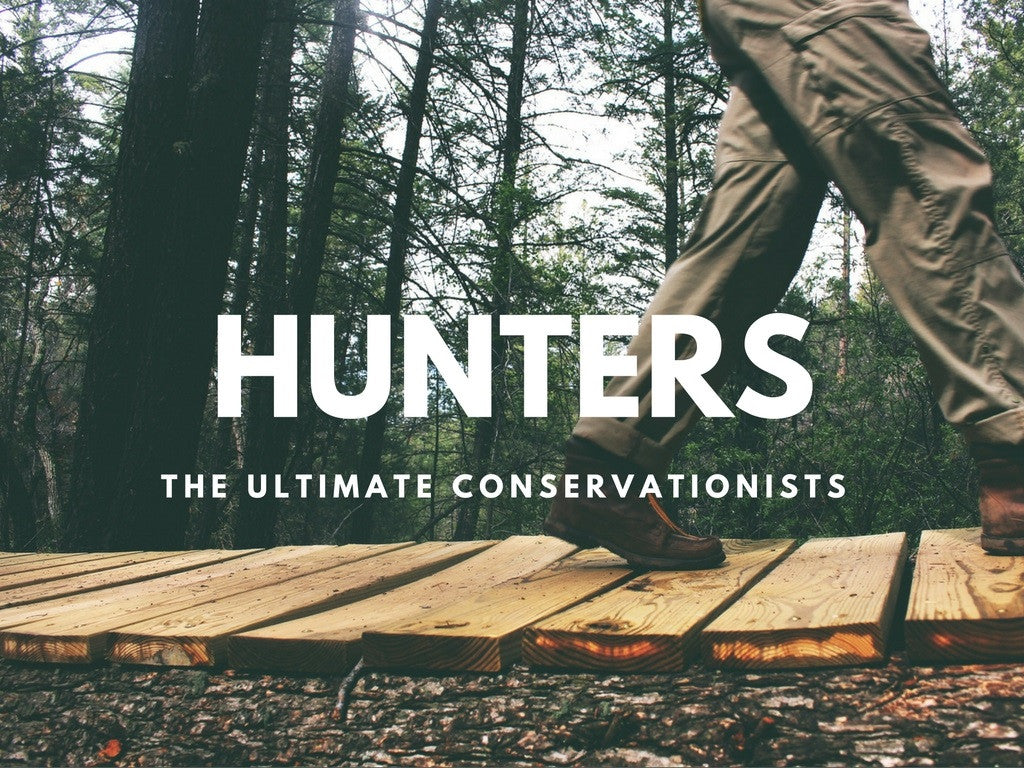
Why Hunting Is Good For Our Environment 0
Since extinction of many species, wildlife conservation organizations such as WWF has aggressively campaigned for the betterment of the environment by preserving species. This is why, the proportion of hunters in the general population has declined steadily over the last four decades, going from 11% in 1960 to 8.3% by 1990 to about 6% in 2001 (Savannah River Ecology Laboratory, 2003).
Why is hunting good for the environment? To begin with, let’s characterize "good" as circumstances or exercises that keep up natural life at current levels. All things considered, hunting is useful for the ecology in light of the fact that the hunting group guarantees that natural life populaces of amusement species are supportable starting with one era then onto the next. This requires an assorted qualities of regular natural surroundings be kept in place, unpolluted, and undisturbed. Hunting bolsters every one of these endeavors.
The taxes from hunting exercises go to the states or to the government for such purposes as improving natural life living space, overseeing and keeping up of parks and wildlife refuges, and directing reviews and research to decide the status of diversion as well as some non-game species. Along these lines, hunters contribute widely to profiting indigenous habitats.
Keeping our wild living spaces undamaged, clean, and regular as could reasonably be expected is a key part of having the priviledge to hunt. In any case, hunters are by all account not the only ones looking for such environments. Environmentalists rely upon them for examination. Explorers, bird watchers, and wildflower viewers all search for natural surroundings that are uncontaminated and brimming with wild things.
Obviously, these gatherings target living spaces that support their own particular advantages. Explorers need trails. Bird watchers need a differing qualities of moderately calm natural surroundings. What's more, hunters need land administration that supports their birds or mammal. Likewise, hunters and gatherers don't care to share their environments, as their passions are completely different and most of the time, clash. However, despite the fact that time-sharing may in some cases be an issue, an assortment of untamed life lovers have a solitary vision- - solid ecosystems.
Obviously, what makes a "decent" woodland for a hunter might be not the same as what different occupations consider a "decent" domain, and bargains must be made to suit every one of them. In any case, the time has come when hunters must gain entry into the organizations with different outdoor lovers who have a similar enthusiasm for keeping up sound natural surroundings of backwoods, streams, and wetlands. The time is also here for them to collaborate in an effort to create successful environments for future generations.
In reality hunters are going into associations with examination environmentalists, and associations that emphasize the insurance of our natural surroundings. These people all rely on one another to save our environment. Ironically, one group is pushing out the ultimate conservationist- the hunter.
- Caroline Mayou
- Tags: Hunter's Corner
